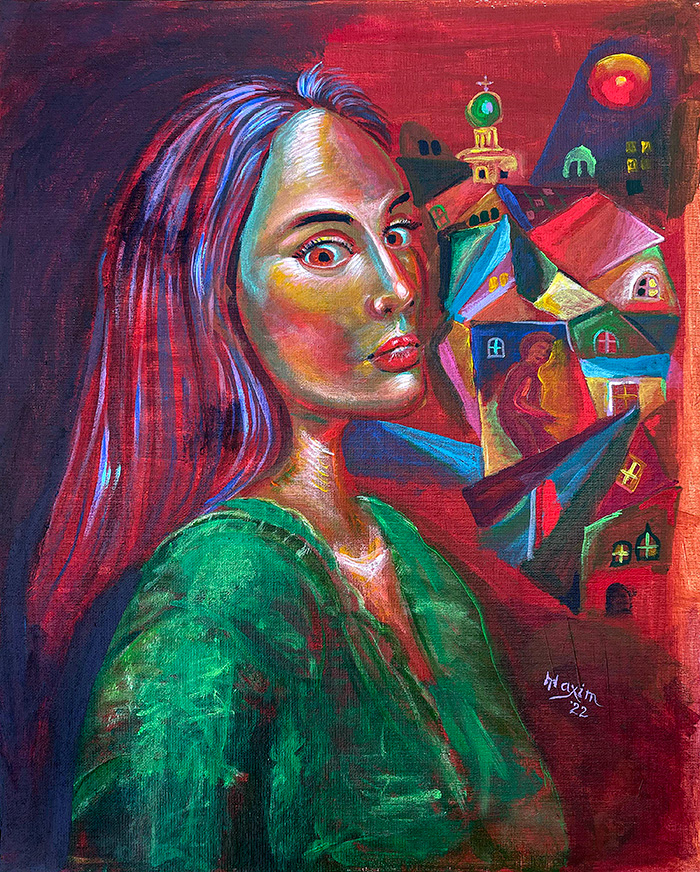
The architecture of the axes of the painting is well-constructed. The left half is occupied by the protagonist, and the other half by her environment, unfolding the narrative for us.
What stands out in this painting is Sonia’s expression. The way the painter has crafted this face is striking, presenting a personality that challenges social conventions and affirms freedom as the ultimate purpose of the universe’s creation. Everything exists to move from inanimate to living, and all living things culminate in “living in freedom.”
This concept is symbolized by the lightning we observe. As Elder Athanasios said, man found his troubles from the moment God granted man freedom.
However, we examine these existential, theological, and anthropological issues from an aesthetic perspective. How did the painter make colors, strokes, and lines embody freedom? How does this Spartan being reveal itself, making us forget we are observing a composition of materials? Essentially, the way materials are composed transcends materiality. In such moments, we witness the miracle of art. These moments are beyond interpretation; they are like structures that overcome the stress of building, sidestep anxiety, and seem not handcrafted.
Such moments defy time and remain eternally significant in art history. Opinions like “I like it or I don’t like it” do not apply here. It is what it is. These moments advocate for the mystery of creation ex nihilo.
Creating from nothing defines arbitrariness, the ultimate challenge to logic. It’s as if the artist is saying: “Listen, understand this well. There was nothing. Then ‘something’ was made. From this ‘something,’ various conventions developed.” The true novel creates masterpieces that remind us of the existential freshness of creation from nothing.
The environment around the protagonist: A wise decision led Maximus to use a rosy to magenta brulée color in the right half of the background, overlaying it with decorative embroidery dominated by wonderful complementary green. This green appears in the foreground as the protagonist’s dress and in the background’s upper right corner as a luminous dome, bringing a metaphysical whisper, a “mining,” as Papadiamantis would say. From the front dress to the distant dome, it encompasses human suffering.
Suffering is expressed through jagged lines contrasting the gentle curves of the face, forming cube-like, conical, or pyramidal houses that create a three-dimensional space. In these narrow alleys, a Dostoevskian existence, pained by the unfulfilled and irreparable, grazes its dreams. Some buildings, with their knife-like tips, threaten to strike her neck, symbolizing existential torment. Henri Focillon was right to exclaim, “Oh, brush stroke, you contend with fate to extract from it rare innovations.”
Destiny corresponds to death. Our innovations bring a scent of eternal life. Dostoevsky drew his ink from the darkness of sunless alleys, but his writings illuminate the darkness.
Fr. Stamatis Skliris
